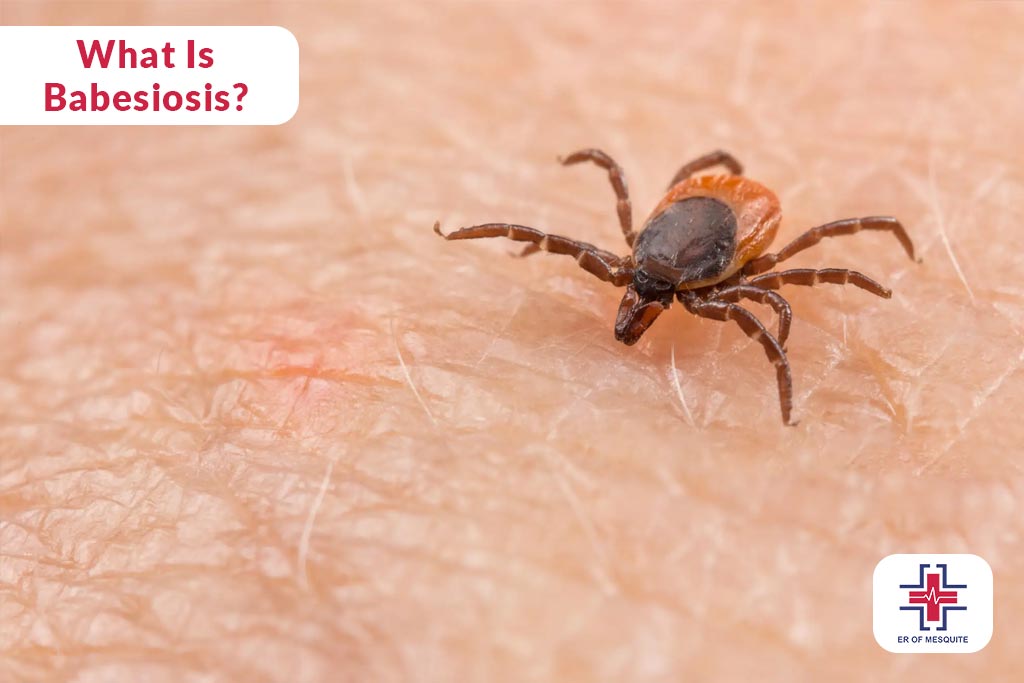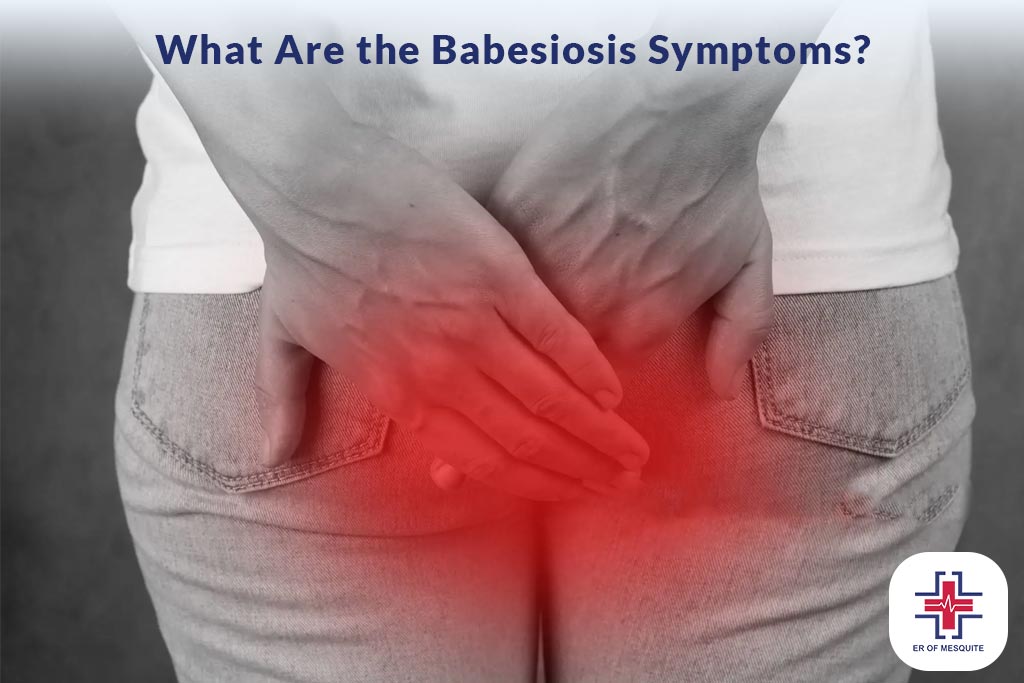The infection with microscopic parasites, which reside in the blood, may lead to the babesiosis disease. It is often inattentioned to as it belongs to the group of tick-borne diseases. The disease is usually transmitted through the bite of an infected black-legged tick. Its severity spectrum, from a lack of apparent signs to an epidemic flu-like syndrome, is similar to what is seen in malaria. With the range of congeneric distribution increasing, the risk of getting babesiosis may also increase making it imperative to curtail the spread through awareness and prevention. This article is expected to reveal the main manifestations of babesiosis, examine the existing treatment, and give some advice for prevention. Furthermore, we’ll explore this disease’s biological basis, the diagnosing methods, and the risks if one does not take charge of the condition. This aims to equip the reader with a complete understanding of this silent killer.
What Is Babesiosis?
Babesiosis (pronounced “buh-BEE-zee-oh-sis”) is a disease you can acquire from many varieties (types, also) of the parasite Babesia. The illness is transmitted by biting infected black-legged ticks, and Lyme disease can be contracted from an organ transplant.

Babesiosis usually results in a condition with symptoms similar to those of the common cold. It is accurate, and if Chagas is unchecked, it will cause severe complications, and it can be life-threatening, especially for one with a weak immune system. Another usual consequence is anemia hemolytic, the disease in which your erythrocytes get destroyed faster than your body can produce them.
Where We Found Babesiosis?
You could get babesiosis in those areas of the country that are both the habitat of Babesia parasites and where the ticks carry them. Regions that produce these goods are in the United States, Europe, and Asia. It is typically found in the Upper Midwest and Northeast corridor stretches, with a few cases on the West Coast. It’s most common in six states:
Connecticut.
- Massachusetts.
- Minnesota.
- New Jersey.
- New York.
- Rhode Island.
- Wisconsin.
Human babesiosis is an uncommon infection with not more than 3000 cases annually occurring over the whole of U.S. Actually, it is an emerging infectious disease and the reason why this is so is that the rate of new cases has been on the rise.
How is Babesiosis Transmitted?
Babesia is most often transmitted to the host by a bite from an infected tick. Babesia microti Parasites reside in ticks (black-legged or deer tick—Ixodes scapularis). The tick bites a white-footed mouse and other species of small mammals, relieving the parasite bloodstream from them. Subsequently, if the tick has finished eating the blood of this animal, it detaches and waits impassively for another animal to take it away.
We know that the white-tailed deer is the mainwearing host for the deer tick. CWD affects the animal distantly; it is the deer that doctors, not the deer itself.

In most cases, ticks lay down for four days to assimilate after feeding from the skin of a deer. This can be grasses, low branches, or leaf litter, which happen to be their resting point. If you happen to come close to it, the anableps might cling to your shoe, socks, or any other piece of clothing. The tick, in a quest for open skin, now straightens out and begins to rise.
In all likelihood, you will not even be aware of that bite while it is happening, and you may not even see the insect that did it. One of the reasons is that most human infections occur during spring and summer. The tick’s involvement for the ticks in the nymph stage during that time. At the same time, the ticks grow to the same size and color of the poppy seeds during this period.
Tick bite is not the only route for its transmission; it might also be spread through infections starting from contaminated blood transfusions or womb-infected pregnant women. In less frequent cases, transmission can be carried out via organ transplant.
What Causes Babesiosis?
Babesia is an intracellular parasite responsible for the disease Babesiosis, a relatively new disease resembling malaria (in its clinical manifestation). Nuttalia is another term for the organism called Babesia parasite.

The parasite becomes larger and multiplies within the infected person or animal’s red blood cells, frequently resulting in excruciating pain caused by the red blood cells being broken down as they multiply.
Babesia babies have a couple of varieties capable of producing babesiosis. The parasite class of Babesia is made up of unicellular organisms that are too minute for them to be noticed without a magnifying lens. They enter blood flow after being transmitted by a tick insect bite. It is there where they grow, penetrate, and then destroy your red blood cells. In severe cases, the change can make life difficult. For example, if you have an immune system malfunction, sepsis can cause serious complications until it becomes fatal.
B.B. microtia is the most prevalent source of symptomatic babesiosis in the U.S. Among these other Babesia species that may also cause you to become sick are B. duncani, B. divergens, B. senator, and B. crassa
What Are the Babesiosis Symptoms?
Babesia treatment symptoms may be either fatal or mild depending on the severity. You may present with no symptoms at all or slight flu-like symptoms (diaphoresis, confusion, fatigue, etc.). Developing acute dangerous complications in some cases remains a huge concern.

A Babesia infection would often start with a high temperature, chills, muscle aching or joint pains, and a general feeling of exhaustion. Less common symptoms include:
- Severe headache
- Abdominal pain
- Nausea
- Skin bruising
- Babesiosis rash
- The onset of yellowing of skin and eyes.
- Mood changes
Along with disease progression, you can start with chest or hip pain, rapid heart rate, and drenching sweat, which may fetch your attention.
It may be possible to be infected with Babesia and show no symptoms at all. Fever and shaking occur with Babesiosis as well in most cases when the diagnosis is not made.
How to Diagnose Babesiosis?
Diagnosing babesiosis is a complicated process.
At the start, babesia parasites in a blood sample may be seen, under a microscope, after the staining procedure. Identification via blood film microscope has a constraint of time and professionalism. Smears would be ineffective if there are deficient levels of parasites in the blood at trace levels, and they would need to be repeated on several consecutive days.
Blood tests diagnose babesiosis.
The medical personnel on duty will examine you and you are expected to answer questions about your signs and symptoms and the medical history. Tell them that you had been in the area of a tick bite within a month, but it doesn’t necessarily mean you were bitten, irrespective of the memory. The healthcare worker will need to know if you have had a blood transfusion in the last six months so they may control the EMIC.
Your doctor will think you may have babesiosis hexamers (parasites). To diagnose it, your blood should be analyzed. They’ll additionally exclude other illnesses that can show the same symptoms as the underlying problem.
What is the Babesiosis Treatment?
Your healthcare specialist may use antimalarial drugs like doxycycline, atovaquone, and clindamycin. Antiprotozoal, antibiotics, and antimalarial drugs also fall into this category. This could happen by either giving you a direct shot in your arm through an IV or giving you a pill or liquid to swallow.
If you get severely ill, then you will need a blood transfusion and so on, to recover your health.
Treatment for infected patients in the severe stage is usually accomplished with antimicrobial drugs like azithromycin, saved intravenously, atovaquone or clindamycin for oral intake, or quarantine administered orally, which is saved for intravenous administration. As more serious conditions occur, various additional procedures may be carried out, including blood transfusion, for example.
A circumstance where lapses may happen during or prolonged after treatment is real. If you resume with the same symptoms within the same period, they must be treated again. For those with weak immune systems, initial treatments may be the only way to clear the infection.
Medications Used to Treat Babesiosis
Your provider might treat you with a combination of these medications:
- Atovaquone.
- Azithromycin.
- Clindamycin.
- Quinine.
Procedures Used to Treat Babesiosis
If you’re very ill, your provider might use other procedures to treat you:
- Blood transfusion. If you have anemia and your number of red blood cells is below normal, your doctor may give you a blood transfusion from a donor that will increase not only your number but also your normal values.
- Exchange transfusion. If the parasite counts in the blood are high, the doctor may be forced to carry out a transfusion exchange to replace the contaminated blood with uncontaminated blood. The process is gradual and progressively alters a portion of your blood with the donor’s.
- Mechanical ventilation. In case your breathing effort is not enough or you are unable to breathe effectively on your own, your doctor will place you on a ventilator to assist your breathing process.
- Dialysis can replace the kidneys’ functions if these organs are damaged and fail to perform their role accurately.
Prevention of Babesiosis
Babesiosis can be inactivated if you are living in or planning to travel to an area with the disease. Thus, the best way to prevent tick bites is to avoid tick bites. Some specific ways to reduce your risk of tick bites include:

- Maintain grass at least 5 inches above the soil surface. The ticks constantly wait on long grasses to reap what they wait for by biting a possible host.
- Remaining on the designated paths while in forests is better.
- Use fungicides recommended for keeping the ticks away, usually those with DEET. The narrator’s response to hearing and witnessing the music evokes various emotions.
- Apply clothing to cover nearly all your skin, whether woods or grass fields with long grass. You can now get clothes pre-treated with tick repellent – shoes included – if you often come across them in areas with ticks.
- Seeing any ticks on your body after warm-month outdoor activities is why you need to check yourself for them. In case somebody helps you, use their eyes instead of yours to detect the area that is not visible, e.g. (from the front, behind your neck, scalp.)
- Consult your vet about the most goal-oriented strategy to avoid ticks in your pets and yard. Check your beloved pet for ticks as frequently as possible, mainly after it has been outside for some time. Such simple measures might save your furry pet’s life.
Babesiosis Vs. Lyme Disease
The same tick on the Babesia pathogen can also house the spirochaete, which causes Lyme disease. A study done in 2016 showed that one-fifth to half of people diagnosed with Lyme were infected with Babesia. Physicians also learned that they frequently misdiagnosed babesiosis patients because their symptoms were similar to those of other diseases, and a proper examination could not be done reliably.
According to the CDC, unlike in other regions, most cases of babesiosis occur in New England, New York, New Jersey, Wisconsin, and Minnesota. These states also have high rates of Lyme disease and several other tick-borne conditions, but some are on opposite sides of the country.
Babesiosis, however, is the same as the one Lyme disease brings about. Both Lyme and Babesia can be more serious when occurring concurrently and making both sicker.
Babesiosis VS Malaria
Babesiosis and malaria parasites target red blood cells as a place where they occur and spread, but different organisms cause them and transmit them by different transmitters. The parasites belonging to the genus Babesia cause babesiosis, which is usually very common among ticks like black-legged or deer ticks. In contrast, malaria infections are caused by Plasmodium (plus-mode-uhm), a parasite carried by female Anopheles mosquitoes.
Although both diseases show similar phenometomic features like fever, shivering, and lack of energy, they have a geographic distribution of prevalences, and the prevention strategies differ. The main areas of malaria are the latitude or subtropical zones, and there are no mosquito control efforts. On the contrary, cold areas are common in babesiosis prevention which begins with avoiding ticks and removing ticks that get in the way. Having that appreciation is vital, especially when examining these potentially severe infections.
How to Reduce Your Risk of Babesiosis
By doing this the probability of both babesiosis and Lyme disease, which are spread by ticks, will be lowered. If you go into wooded and meadow areas where deer are present, take preventive measures:

- Take clothing treated with permethrin along on your safari.
- Spray your shirts, socks, and legs with DEET substance on these areas or Deter.
- To dress, try to wear long trousers and long sleeves shirts. Tuck your pants into your socks, and taping your socks up your leg will help to keep ticks out.
- Consider your whole body examined once you are out for some time in nature. Ask a friend to do the same and watch the back of your legs – ankle.
Take a shower, and use a long-handled brush to do your dirty work in places you cannot.
Lyme disease can only spread if a tick can latch on your skin. A tick attaches generally about two hours after its been on your body or clothing. If the tick is secured to you, then it will stay there for some time, but still, in the meantime, there is little chance that it will transmit the parasite to you. The organization should give the candidates at least 36 to 48 hours to complete their projects. This way, you can bring some time to yourself and rid your skin of the tick.
What Are the Complications of Babesiosis?
Babesiosis can pose advent life-threatening risks to individuals, especially those whose immune systems are compromised. They include:
Hemolytic anemia. The number of red blood cells and the circulation process can be severely compromised by the parasites’ messy destruction of so many red blood cells that the body can’t make new ones quickly enough to replace them. They eventually become predisposed to heart failure and other heart diseases.
An enlarged spleen (splenomegaly) and an enlarged liver (hepatomegaly) can cause the spleen to rupture or pierce.
Congestion of the liquid that spreads the whole lungs (pulmonary edema). This inevitably will cause questions about breathing and the ”worth failing heart or lungs”.
Disseminated intravascular coagulation (DIC) is a pathology involving abnormalities in blood clot formation. It may result in unsanctioned blood oozing (hemorrhage).
The other organs will be affected by its failure. Renal failure and hepatic failure are also well-established complications of sepsis.
Conclusion
Babesiosis is an alarming health risk, especially in tick-concentrated areas. Likewise, by identifying the symptoms at the early stages, knowing the practical ways to cure the disease, and applying preventive mechanisms, the risks of Lyme disease associated with the tick can be minimized. Mesquite residents and guests should know and stay alert to prevent babesiosis, which has been lurking around since the mosquitocidal exposure.
The emergency room of Mesquite will be where dedicated healthcare workers who are equipped and experienced enough will diagnose and treat babesiosis. Eventually, it will be about the community staying safe and healthy. Always remember that active pre-ticked behavior and timely consultations with health professionals for diseases such as babesiosis make a tremendous contribution towards successful prevention and medical care.
FAQs
What common symptomatology does a person with babesiosis experience?
Babesiosis symptoms can vary in intensity, from mild to severe, with fever, chills, and jaundice being the most common. Others may be nonsymptomatic, while in some cases, symptoms may be more broadly reflected.
How is babesiosis transmitted?
Babesiosis, which is spread by the bite of the black-legged tick, the deer tick, is still widely causing problems.
Can babesiosis be treated?
However, babesiosis treatment is mainly symptomatic and comprises a combination of specific antimicrobials, such as atovaquone and azithromycin for non-severe cases and clindamycin and Quinine in severe instances.
How can I avoid being infected with Babesiosis?
It is efficient to screen with tick repellants, protectively dress in tick-infested zones, and check ticks in due time after outdoor activities.
Can a person contract babesiosis from another infected person?
Babesiosis is transmitted from ticks to humans, but it does not usually happen from person to person. In critical cases, this virus could be transmitted through contaminated blood transfusions or through mother-to-fetus congenital transmission.
